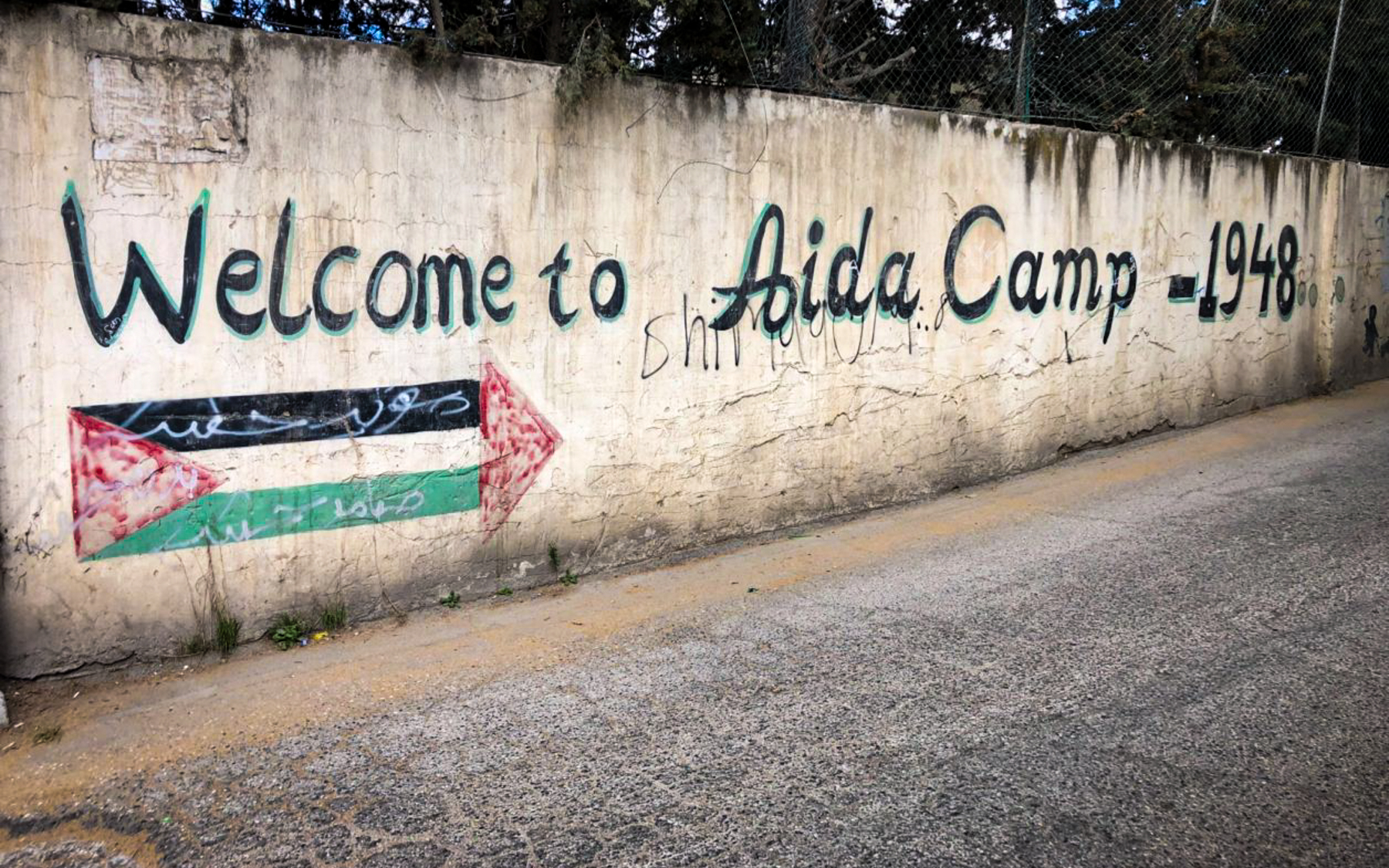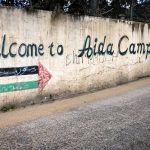STORY AND PHOTO BY JOY BORKHOLDER
“Freedom of movement” wasn’t really on my mind as I trained at home in Seattle to run my first 10K in Bethlehem, a shorter race within the Palestine Marathon.
This 10K wasn’t the real goal of my fourth visit to the region. Instead, I went to help a friend with a book project, see other friends, and visit some holy sites, with a bit of excellent falafel and a 10K on the side.
The marathon organizers hope to build a running culture in Palestine, foster cultural exchange among residents and visitors, and highlight the lack of freedom of movement Palestinians experience.
But more than the event itself, it was my final training runs that informed my small taste of solidarity with people living under occupation. That, and of course listening to friends speak about their daily lives in the West Bank.
I flew into Tel Aviv about a week before the race. Two mornings after I landed in a time zone 10 hours ahead of home, I woke up to a warm, sunny day. I was ready to run.
My local friend—not a runner—suggested that the easiest, safest place for my training runs would be a “soccer field” nearby. I thought this might get a little boring, but I figured that at four to five laps per mile with some good music or podcasts, it wouldn’t be terrible.
I was wrong.
The soccer field of worn turf was maybe half the standard size, surrounded on three sides by a tall chain-link fence and on one side by an old rock wall.
I stopped counting, but my running app told me I ran 5 miles (about 8 kilometers), which had to have been at least 60 laps based on very rough math. The view above the city couldn’t compensate for the monotony and feeling of being caged in.
I managed to do three training runs that week, with each one successively shorter as I temporarily lost the joy of running. Normally, for me, running is fresh air, the open road or trail, and mind-clearing freedom.
But this soccer field did indeed seem to be my only obvious option, as the streets and sidewalks were generally packed with cars, buses, trucks, and people, not to mention tripping hazards. No parks and no long stretches of calm roads or paths were nearby.
Perhaps with more time and familiarity, I could have figured out how to safely run in, for example, Battir, a lovely village in a valley with walking paths. Google Maps shows a snaking, 15-kilometer walking route to get there, warning that “This route may cross country borders.”
Of course with my U.S. passport such warnings aren’t much of a problem for me. I would, though, still have run the risk of encountering spontaneous conflict along the way, especially given the rise in tensions and violence that has marked early 2023.
On race day I was excited and ready for an open run on streets blocked off for that purpose. The mood was celebratory, exuberant even, as people of all ages gathered in Manger Square.
And it was indeed a great run. We snaked through Bethlehem towards the wall that slices up the West Bank, through Aida refugee camp, and back and forth on Bethlehem’s main streets.
That very night, I flew back home to Seattle. Within a few days I ran freely again, enjoying the freedom to move without fear or passport control.
I carried only a house key and my phone strapped to my arm. I ran on safe sidewalks, streets, and park paths in my urban-suburban neighborhood, meandering wherever I pleased.
As I ran, I thought about my responsibility as a human, friend, and U.S. citizen. I’m still thinking about it.
Joy Borkholder is a reporter based in Seattle, Washington. She usually writes about health and social issues, and loves to combine narrative with deep data and policy analyses.


